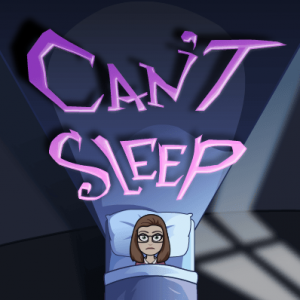Notice: Undefined offset: 1 in /home/suffol14/public_html/wp-content/plugins/monarch/monarch.php on line 4359
Notice: Undefined offset: 1 in /home/suffol14/public_html/wp-content/plugins/monarch/monarch.php on line 4359
Notice: Undefined offset: 1 in /home/suffol14/public_html/wp-content/plugins/monarch/monarch.php on line 4359
Notice: Undefined offset: 1 in /home/suffol14/public_html/wp-content/plugins/monarch/monarch.php on line 4359
Notice: Undefined offset: 1 in /home/suffol14/public_html/wp-content/plugins/monarch/monarch.php on line 4359
Notice: Undefined offset: 1 in /home/suffol14/public_html/wp-content/plugins/monarch/monarch.php on line 4359
Nightmares are a common source of sleep loss.
– Denise Dixon, PhD @suffolkhealthpsy.com
Nightmares are a common source of sleep loss for many people. When we experience repeated and vivid nightmares, we may begin to avoid sleep at night. Sleep loss can then lead to even more vivid dreams or nightmares.
What a vicious cycle!
Many of us think that there is nothing that we can do, about nightmares.
Not True!
First of all, it is very important to remember that having nightmares once in a while is entirely normal.
But what about those repeated nightmares? And/or traumatic nightmares? Can anything help us with those?
Yes!
[tweet_dis]A technique called imagery exposure and dream re-scripting has been shown to reduce the amount of nightmares experienced. Many people have said that this technique has gotten rid of their nightmares completely![/tweet_dis]
Imagery (or Nightmare) Exposure
What is nightmare (or imagery) exposure? The technique is quite simple, and comes from cognitive behavioral treatment of anxiety disorders.
RELATED: 7 Easy steps to find the right psychologist for you
The concept of exposure is all about facing our fears head on. When we face our fears, instead of avoiding them, we take away their power over us.
Usually, our nightmares are very vivid representions our deepest fears.
[tweet_dis]By facing our nightmares, we learn how to control our fears, instead of allowing our fears to control us.[/tweet_dis]
Nightmare exposure is used through a technique called dream (or nightmare) re-scripting.
Dream (or Nightmare) Re-scripting
Dream (or nightmare) re-scripting is a type of nightmare exposure. Nightmare re-scripting is frequently used to help people that have post-traumatic stress disorder (PTSD) to deal with traumatic nightmares.
The bodies and brains of people with PTSD are essentially tricking them into believing that the past trauma(s) is (are) happening in the present moment. Traumatic nightmares are another form of “stuck” memories.While we cannot go back in time, and change the past, we can help the brain process past memories to put them in the past, where they belong.
We can re-write traumatic (or non-traumatic) nightmares in any way that we want, so that we can gain a sense of control over upsetting events, experiences and/or images.
It doesn’t really matter if the events happened “in real life” or not. The goal is to gain a sense of control.
Sounds good, right?
Does Nightmare Re-scripting really work?
The short answer is yes!
A decent amount of high-quality research studies have shown nightmare re-scripting reduced the frequency of nightmares.
The catch?
Like any health behavior, we need to practice the technique in an organized, consistent manner, for at least one month, to gain any real benefits.
💡TIP: Jumping into nightmare re-scripting, with our most frightening nightmare(s) may cause us to quit, before we even start. Therefore, we may want to start with a less distressing nightmare. Being gentle and kind with ourselves will help us to gain confidence, and inspire us to forge ahead.
So, how do we go about nightmare re-scripting?
How to Get Rid of Nightmares: Staring into the abyss
To conquer our nightmares, we need to stare into them. Denise Dixon PhD @ suffolkhealthpsy.com
We are now presented with several different approaches to getting rid of nightmares.
Read on, to decide which technique would work best for you.
Technique #1: Get rid of nightmares in 3 simple steps
Click on the slideshow below, to learn about this simple (3-step) technique to get rid of nightmares.
Technique #2: Getting rid of nightmares by drawing
What if we don’t like to write? Can we draw, instead?
Of course!
Technique #3: Digging in Deep (with 6 steps to get rid of nightmares)
We are going to follow the same steps (1-3) in either Technique #1 (writing) or #2 (drawing). Only this time, we are going to dig deeper with a series of questions.
Technique #5: Good sleep hygiene helps to get rid of nightmares
In our previous post, we learned how to take excellent care of our sleep with good sleep hygiene.
RELATED: What is sleep hygiene, and why is it so important?
We know that repeated nightmares often leads to sleep avoidance. Sleep avoidance leads to sleep loss.
Sleep deprivation is associated with a phenomenon (I just love that word!) called “R.E.M. rebound.”
We dream during R.E.M. (Rapid Eye Movement, or Stage R) sleep.
R.E.M. rebound has been associated with vivid dreams, including nightmares.
So, good sleep hygiene is a good way to prevent nightmares, in the first place!
Don’t you just love easy?
We can transform nightmares into dreams!
– Denise Dixon, PhD @suffolkhealthpsy.com
REFERENCES AND RESOURCES:
Please click here for links to references for this blog post, and here to access additional links and resources.
RELATED: Is sleeping one of the easiest ways to help you to manage your weight?
UP NEXT: Introducing: An ultimate list of excellent apps that improve mood and health
YOUR TURN:
What do you think about this post? Do you think that you would try any of these techniques? Really looking forward to reading and responding to your comments! Thank you so much!
Do you have a suggestion for a blog post? I’d love to hear from you! Simply click here to tell me all about your idea. Thank you!

























Hello Dr. Denise,
I have been there, a Few years back, I don’t know if it was a paranormal thing or my mind playing tricks on me. I had a couple of bad weeks.
I used to wake up around 3:00 AM every night. And It was hard for me to get back to sleep. Sometimes I would just lay still. because I was afraid of closing my eyes.
But I started to deal with it. And I started to invest my time into something productive. By the time it went away. And now whenever I had a bad dream I remind my self it is just a dream.
I also started drawing and writing short stories.
Thank you for all the amazing tips. You have a really amazing blog. 🙂
Have a good one
Bhawna
Dear Bhawna;
Thank you so much for your honest recanting of your experiences. It sounds like you have done an amazing job with confronting your fears – congratulations!
And thank you for your very kind feedback. I’m so please to learn that you enjoy this blog!
Cheers!
Dr. Dixon
Hey Denise,
Yeah, you have a nice blog with some amazing information.
Regards 🙂
Regards to you, too! ☺️
Loving these tips Denise! Big fan of simply being with the nightmare and allowing the feeling charge to arise – however unpleasant – and then, to pass. Like the nightmare loses its power the moment I am with the fears fueling the horrors. Then the recurring bit ends. One time nightmare LOL….a good deal. Drawing out nightmares feels like it’d be particularly cathartic. Thanks for sharing!
Ryan
Thanks for the terrific feedback, Ryan!
You are espousing the basic principles of anxiety management – embracing, facing, and leaning into the uncomfortable feeling, until it releases. You sound like you are a natural, and a real master at these types of techniques! Thanks again.
See you over at your Blogging from Paradise blog…